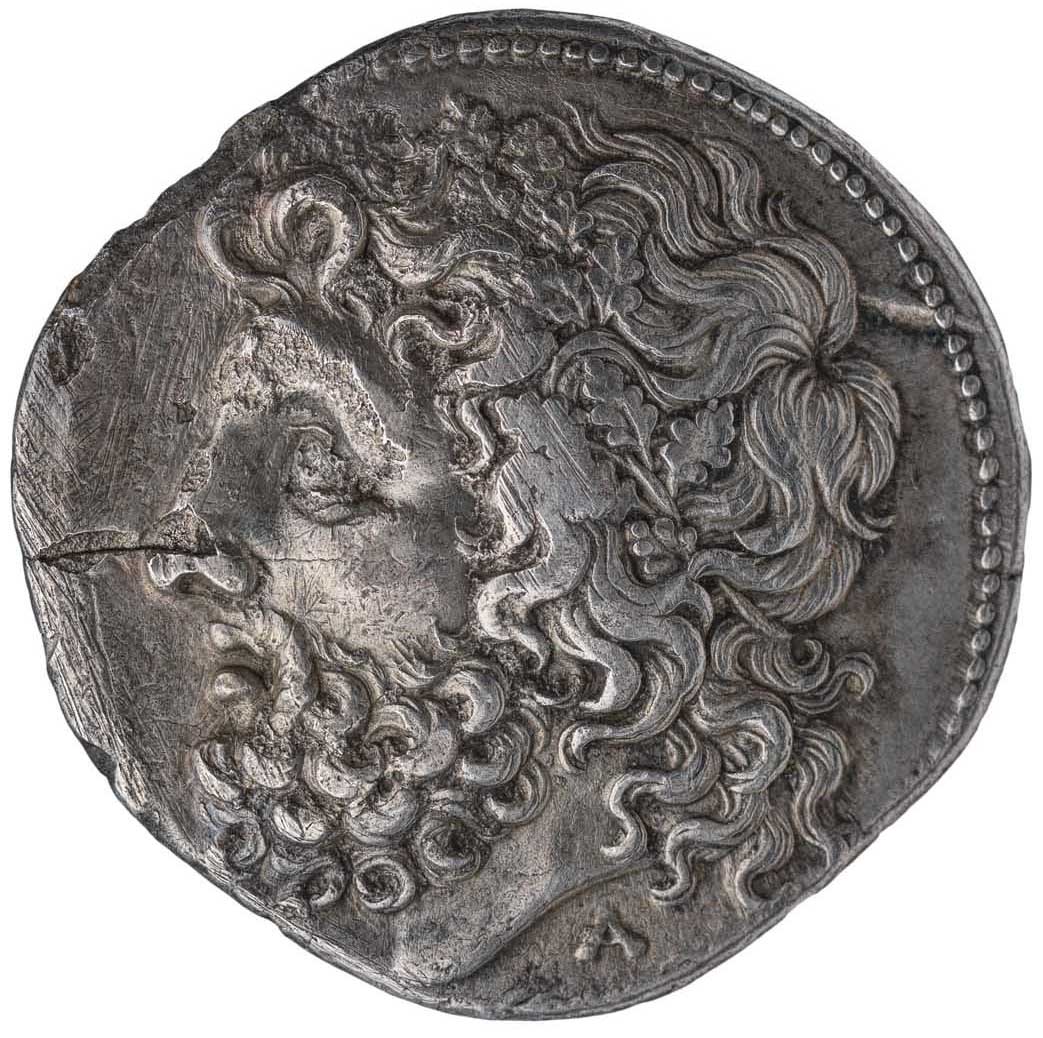The Archaeological Museum of Thessaloniki inaugurates a new temporary exhibition entitled "new entries / new approaches", which will be periodically renewed, keeping thus alive the interest of its friends and visitors.
An elegant showcase in the museum's reception hall welcomes the visitors, introducing them to some of the most interesting, new and old, ancient artefacts: objects that were either recently acquired and are now presented to the public for the first time or were “retrieved” from the museum storage to be exposed in the light of a new approach, e.g. after a remedial treatment by the conservators, a new interpretation by the researchers or new scientific data.
Four silver coins, which have recently enriched the museum's numismatic collection, mark the beginning of this new temporary exhibition: four coins of special archaeological value, each with its own “biography”, old and modern. The first three were in the legal possession and ownership of a citizen and were acquired by the Hellenic Ministry of Culture & Sports through purchase; the fourth was acquired through confiscation since it had been illegally exported from Greece in order to be sold at an auction.
1. Silver tetradrachm, the Chalcidian Confederacy, Macedonia
Date: early 4th c. BC
Mint: Olynthus
Obverse: Head of Apollo with laurel wreath
Reverse: ΧΑΛΚΙΔΕΩΝ. Lyre.
The Chalcidian Confederacy, a strong federal state with Olynthus as its capital, was formed in 432 BC, when the cities of Chalcidice rebelled against the Athenian League. The Confederacy issued coins with iconographic types connected with Apollo, who was worshipped throughout Chalcidice. In 348 BC Phillip II dissolved the Confederacy completely and razed Olynthus to the ground.
2. Silver tetradrachm, Lysimachos, Thrace
Date: 297-281 BC
Mint: Lampsacos
Obverse: Head of Alexander III with a royal diadem and rams’ horns, deified as Ammon-Zeus
Reverse: ΒΑΣΙΛΕΩΣ ΛΥΣΙΜΑΧΟΥ. Athena enthroned, holding a small Nike. In field left, herm.
Lysimachos, one of Alexander the Great's bodyguards and successors, declared himself King of Thrace and gradually extended his dominion to Macedonia and part of Asia Minor. The coins he issued (“lysimachoi”) carried the most popular effigy of Alexander the Great, a dynamic and symbolic image of him, promoting thus Lysimachus' rights to the inheritance of the great ruler.
3. Silver tetradrachm, Pyrrhos, Epirus
Date: 278 BC
Mint: Locri Epizephyrii, Bruttium
Obverse: Head of Zeus Dodonaios with oak wreath
Reverse: ΒΑΣΙΛΕΩΣ ΠΥΡΡΟΥ. Dione enthroned.
Pyrrhos was the King of the Molossi of Epirus. During his military expedition to South Italy and Sicily, in order to protect the Greek city-states there against the rising Rome, issued coins in the local mints, on which were represented, inter alia, the great patron deity of Epirus, Zeus Dodonaios, and Dione, the god’s consort.
4. Silver octadrachm of Ichnai
Date: ca. 485-470 BC
Obverse: ΙΧΝΑΟΝ. Nude male figure, leading two oxen.
Reverse: Wheel into incuse square
The Ichnaei are among the so-called “Thraco-Macedonian” tribes who dwelt in central and eastern Macedonia, and are mostly known to us through their numismatic production: silver coins, of large weight and denomination, that are usually found in “hoards” in the Near East and in Egypt. Their issuance indicates access to silver mines and a use of the coins not for daily needs but rather for large-scale economic activities (tribute payments or export of silver in the context of commercial exchanges). Herodotus (7.123.3) refers to Ichnai as a polis, situated near Pella, in the region of Bottiaia.



















